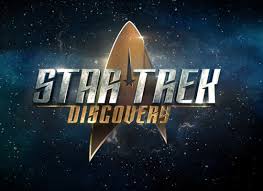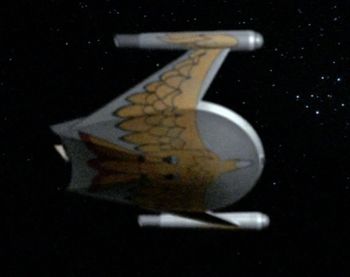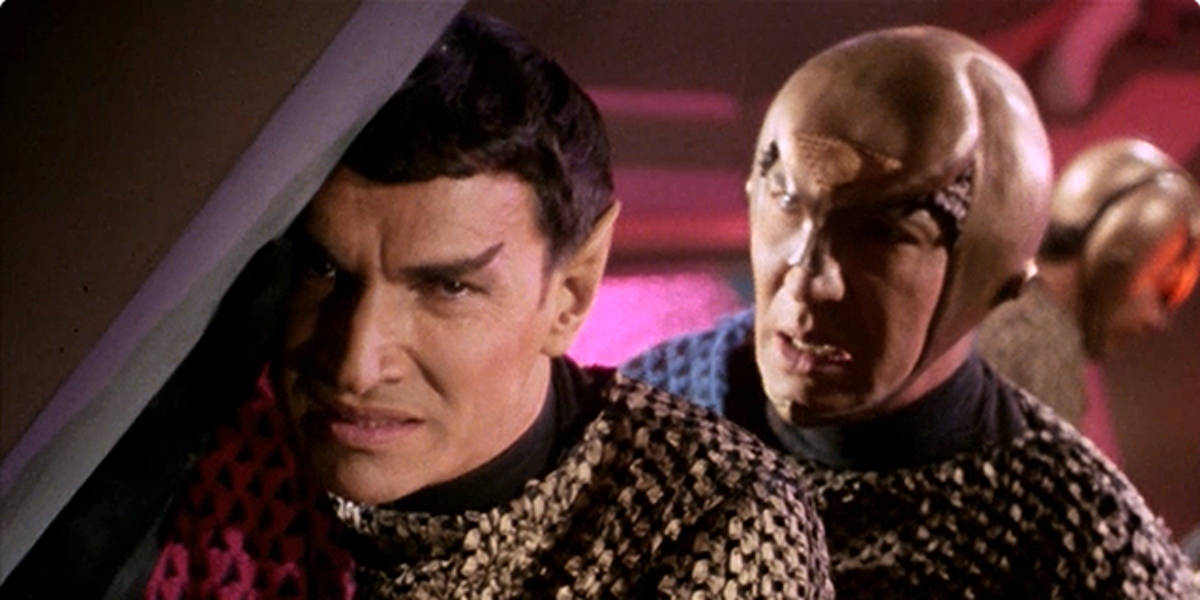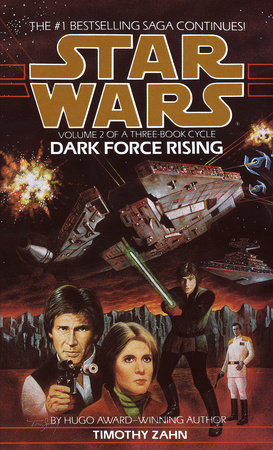Modern Star Trek, Star Wars, and the Problem of Creativity by Yakov Merkin
Thursday , 30, November 2017 Movies 11 Comments From a certain point of view, we are currently living in a great time for two of the most well-known science fiction franchises, Star Wars, and Star Trek. With Star Wars, we have several new films, at least one TV show, as well as comics and novels—and more is announced seemingly every week. And with Star Trek, we have the new, high-budget show, along with outgrowths of it. And in a world where reboots and unnecessary sequels abound, surely in these two expansive science fiction universes we will have fresh, new, fun stories that don’t rely on nostalgia, right?
From a certain point of view, we are currently living in a great time for two of the most well-known science fiction franchises, Star Wars, and Star Trek. With Star Wars, we have several new films, at least one TV show, as well as comics and novels—and more is announced seemingly every week. And with Star Trek, we have the new, high-budget show, along with outgrowths of it. And in a world where reboots and unnecessary sequels abound, surely in these two expansive science fiction universes we will have fresh, new, fun stories that don’t rely on nostalgia, right?
However, if we actually look at the newest iterations of both franchises, numerous significant problems arise, too many to address in this post. However, one that has stuck out more and more to me as I’ve followed the new Star Trek and Star Wars content is particularly troubling to me as a creator myself: a severe lack of creativity. The reliance on “things we know,” nostalgia, and attempts to coat such references or plot threads with a veneer of something new definitely plays a large role in the increasing dissatisfaction among longtime fans of both franchises. While both Star Trek and Star Wars show many similar symptoms, each deserves a closer look at the problems in this vein that they manifest.
Let’s start with Star Trek, mainly because there is less Star Trek content out, and, thus, less has been said about it. Star Trek: Discovery, henceforth referred to properly as ST:D, first demonstrates the lack of creativity on the part of its creators by the simple fact that it is yet another prequel. This is not to say that prequels always mean a creator is suffering from a lack of creativity, but in this case, I think it is safe to say that it is so. Remember, the last Star Trek television series, Enterprise, was a prequel too, and it didn’t go over too well with the fans, and only lasted four seasons (significantly less than the 3 preceding series.) So given that the last prequel attempt was apparently a failure, ST:D’s creators… went with another prequel.
As seen in both Enterprise and ST:D, prequels, especially direct ones like this, which is meant to take place in the Prime timeline, merely 10 years before the event of the original Star Trek, is inherently limited if you intend to at all keep the franchise’s continuity intact. You can’t introduce new aliens, new technology, or events that wouldn’t fit with what we know comes later. Now, ST:D has clearly done all of these things, which is an entirely separate problem, for a different post, but for every time the show breaks with franchise continuity, there is at least one instance in which it relies on nostalgia and “things we know” as a crutch. From minor things such as Captain Lorca’s office having both a tribble and a Gorn skeleton in it (blatant, lazy fanservice), to them taking Harry Mudd, a small-time, comic-relief villain from the original series, and turned him into an evil genius recurring villain. The problem with ST:D Mudd isn’t the character on the show; he’s actually kind of interesting. It’s that they took an established character, simply for purposes of name recognition, and changed him to fit their needs. The same with the Klingons. Had they been some new alien race, most people wouldn’t have cared. But because their focus was on using things people know, they made them Klingons. We also see this in a way with the main character, Michael Burnham. She’s essentially a redo (albeit from a different angle) of Spock’s being torn between a Vulcan and a human approach, down to making Sarek (Spock’s father), of all people, her adopted father. Again, this really shows the show’s priorities. They might want to do different things, but they so badly want to capitalize on nostalgia (or too scared of creating genuinely new things), that we get what we’ve been getting, which results in a much smaller feeling universe.
This is even more evident in modern Star Wars. Much has been said about the similarities between The Force Awakens and A New Hope; there’s yet another Death Star (Starkiller Base), another desert world (Jakku instead of Tattooine), and Rey’s story is very close to what Luke’s was. There are more things, besides for the fact that it’s once again powerful empire versus weaker rebels—I mean Resistance—even though the story shouldn’t work like this, given that there was a Republic re-established. Then we have Rogue One, which is literally telling the story described in the opening crawl of the original Star Wars. There are lots of “things we know” there; from the obvious ships and old characters like Grand Moff Tarkin and Darth Vader, to smaller, more forced “cameos” from those two cantina thugs, and there is even a scene where the camera zooms in on a glass of blue milk. Because we know what that is, I suppose. And beyond that, when we look at the books recently released, and upcoming films, there is even more evidence of this lack of creativity. Lots of unnecessary origin stories, and books whose purpose seems to be filling in movie plot holes, all of which ultimately leads to the universe feeling very small. It projects an illusion of expansiveness, but in practice, especially in the post-Disney purchase, it is very small and limited.
But, as they say, those who can’t, teach (or critique.) Now, fortunately, I can create, and I thought it might be fun to come up with a quick idea for each of these storied franchises, which I think could serve to both reinvigorate them and not over-rely on nostalgia and familiar things.
To keep things in order, we’ll start with Star Trek. Let me introduce Star Trek: Romulus
To start, this would be a true sequel series, set after all of the previous canon Trek—so after the events of Deep Space Nine, Voyager, and, more importantly for this concept, Nemesis. Nemesis may not have been a good film, but there were good ideas in it, and we got some development regarding the Romulans, which is important.
I should also add that I’m willing to compromise a bit with what the current showrunners of Star Trek seem to want, namely a serialized story, which can be done well in Star Trek.
So, the story:
Following the assassination of pretty much the entire Romulan Senate and the whole Shinzon affair, maybe a year or so later, a quiet but very severe civil war has broken out, as various Romulan factions vie for power. In addition to being in competition for power, these groups would have different aims. Some want to restore old system, some want to see military or Tal-Shiar rule, while still others want to establish a more open and free republic. We could follow the crew of a Romulan ship that is on the republican reformist side in the conflict, as they attempt to both see the change they seek implemented, while also remaining true to their ideals. We will get to see an inside look at not just Romulan ship life, but the fraying empire as well, and while the show will be largely serialized, there would still be room to have some genuine space wonder moments.
We’ve had the opportunity to see a bit inside Klingon ships, and to delve into their culture, but not so much with the Romulans. This would truly be  a different approach to the Star Trek universe, and we could take a serialized approach while not going as dark as Discovery is. However, making the focus the Romulans, and not Starfleet, gives much more wiggle room for gray morality, and some darker plots, without going against the utopian Federation spirit.
a different approach to the Star Trek universe, and we could take a serialized approach while not going as dark as Discovery is. However, making the focus the Romulans, and not Starfleet, gives much more wiggle room for gray morality, and some darker plots, without going against the utopian Federation spirit.
Additionally, if we really want to have federation characters involved, we could engineer a situation in which a federation ship gets caught in the crossfire of the infighting, and decides to help this noble cause, either directly (which would involve going against federation directives) or largely indirectly. We could also use this to have an “officer exchange” between our two ships, and get to finally have a Romulan serving aboard a federation starship as well as a human among Romulans, which would give plenty of opportunities for levity without altering the overall serious tone, as the respective exchange officers learn to adapt to their new surroundings. This would make it difficult to focus the show on more than a couple of characters, but in a serialized show we would have to give up a more ensemble cast focus. But, with this being a sequel, we also gain the ability to have cameos from the cast of Deep Space Nine, Voyager, or even The Next Generation. Depending on how this hypothetical show would be paced, it could very easily run for multiple seasons, following the same crew (or two crews); there’d be more than enough material there for that.
Moving on to Star Wars, I’m up-front going to concede to the fact that the main films are locked to the Skywalker family story, and go with an alternate Episode VII. Also, for the sake of this hypothetical, I won’t just take the cop out and synopsize Timothy Zahn’s Thrawn Trilogy, though I will be drawing from it, and have the story take place with the original characters at about the same ages they were in The Force Awakens.
 So, let’s talk about Star Wars: Remnant Rising
So, let’s talk about Star Wars: Remnant Rising
It’s been some decades since the defeat of the Empire at Endor, and while the fighting didn’t completely end there, it was the clear turning point, and now the a new Republic has been well established, and in control. There is, of course, still a not insignificant Imperial force, the Imperial Remnant, that controls a fairly small portion of the old Empire, and the Republic has decided that with it largely contained there, it isn’t worth the ships and lives it would take to completely eradicate it at the moment.
Of the main heroes of the original trilogy, only Leia is still heavily involved in the political landscape, serving as a senator with a good deal of influence, but not as much as she might like, as she has been unable to persuade enough others that the cost of destroying the Remnant would be worth it, and she worries that this decision could come back to haunt them.
Han, meanwhile, is feeling frustrated and stifled, living with Leia on the capital world of the New Republic. It’s boring, and he has neither the skill nor the desire to get involved in the political machinations. And, with their child(ren) off training with Luke due to their Force sensitivity, he really feels like he’s useless and not contributing anything. So, on the side, he and Chewbacca have been getting involved in some semi-legal business or something like that.
And, off in some out of the way place, we have Luke training those kid(s), as well as possibly others. Peacetime is suiting him well, but he has a nagging worry that it won’t always be so.
And we soon learn that things are indeed not well, as a series of coordinated Imperial strikes on Republic worlds, hitting hard and doing major damage before just as suddenly falling back, leaving the Republic military reeling and confused. And worst, as we soon learn, is that the planet on which the new, young Jedi were being trained was one of those targets, and some or all of those there (Luke, Solo kids, etc, are missing.) And yet worse, it’s also learned that the Imperial commander behind these strikes is none other than Grand Admiral Thrawn, whose location and status had been unknown since around the time of the Battle of Yavin (allowing the Rebels canon to mesh with this.)
From there, the story would progress, with all of our classic heroes involved. Han making use of his underworld connections to try and scramble to find and save his kids, Leia trying to help steer the Republic through the crisis, and Luke either captured by the Imperial Remnant or also trying to save his family/students. This development would also allow us to follow whichever Solo child is meant to be a main character, thus starting a gradual passing of the torch from the original characters to new, younger ones. Similarly, we could have a new, younger smuggler or some other underworld-related character involved in the Han Solo plotline, for a gradual passing of the torch there as well.
Part of the problem with the sequel trilogy so far is that the heroes we all cared about were very much shunted aside, unceremoniously, in favor of the new characters. A more gradual handing off would’ve been a much better plan, and, if preferred, by even the second film the primary focus could be on the new cast. Similarly, this story concept allows for some familiar stuff, and tells a story very much in the style of Star Wars, without falling into the trap of over-relying on nostalgia and old plots, I think.
I, personally, would probably also have the main villain not be a Force user, to change things up further, but given that this hypothetical story has Luke and at least one other Force-sensitive character playing major parts, it’d probably be necessary. Just no Palpatine clones—that bit of the old EU is probably best left out.
Both the Star Trek and Star Wars universes are, in theory, vast and expansive, with an unlimited variety of stories that could be told in them. That’s the beauty of the space opera genre (and I will contend that Star Trek does broadly fall under that genre label as well.) Only a lack of creativity, combined with a compulsion to appeal to nostalgia and a fear that only by doing so can they guarantee success. However, as evidenced by much of the criticism modern Star Trek and Star Wars, many of us are growing tired of this lack of originality, this reliance on the few things that the general public knows about the franchises—and between this, (and the oversaturation in the case of Star Wars) I fear that two of the science fiction franchises that have given me a lot of enjoyment and inspiration over the years completely collapsing in on themselves.
While, unfortunately, we have a very limited ability to impact the future of these storied franchises, no one can stop us from creating our own—and their missteps can also serve as a good guide for us of what not to do. My own Galaxy Ascendant series is still in its infancy, with its second book due out later this month, and I already have felt some of the compulsion to over-explain, to do back-stories for everything, but as I plan the future of the series, and work on short fiction set in the Galaxy Ascendant, I am consciously making an effort to make sure that the setting feels as large and expansive as it is, without over-focusing everything around my main cast. The Galaxy’s Edge series by Nick Cole and Jason Anspach has very effectively capitalized on a desire for more Star Wars-like stories without the albatross of nostalgia and over-reliance on familiar things weighing it down, and there are a number of other authors writing excellent, expansive space opera now.
As I mentioned above, one of the best things about writing stories in the space opera genre is that one’s options are limitless, and the only hard-and-fast rule I would put forth is that one’s universe needs to be internally consistent. Beyond that, all options are open, and we should embrace that rather than relying on retelling the same story or constantly referring back to earlier successful works. The temptation is always there, of course, to make stories interconnected, to delve into characters’ backstories, and to internally reference things, and these are not “sins” in principle. But, as I hope I have made clear in my brief discussion of modern Star Trek and Star Wars, relying on such things leads to the universes feeling small and limited. Creators need to take advantage of the creative freedoms the genre provides, rather than imposing limits out of fear of trying new things or falling too in love with some of their creations.
And if these storied franchises do fall, all the more room for fresh, new series to make their mark. For writers, this presents opportunities, and for readers, options. The future is ours for the taking—if we want quality, creative, and fun space opera stories, it’s on us to create and support such stories.
I will make some contention here, not with your proposed alternatives(those are cool) but your history. Star Trek has more hours of screen time with even if you toss out Voyager. Three series for a total of 17 live action seasons plus the movies.(19 with the animated series).
As far as books, I think they’re actually close in count, though there may be more Trek books. Star Wars had a few big hits with Zahn, and that raised awareness. The awareness brought rise to talk.
Ah, you meant amount of new content. My bad.
Now that we can’t, in good conscience, lean hard on Leia, (hindsight is wonderful) some of the details would be different, but yes. As long as we’re stealing, how about Talon Kaarde? Have him loan Han one of his protégés–sort of Leia as Mara Jade. Lose the Force powers and make her (or him) a con artist/spy, telling Han when he’s about to step in it. Let the hot pilot be honest for a change.
Etc.
Could have been fun…
-
You wouldn’t be able to use Han very much either, since it’s understood that the only reason Harrison Ford agreed to return was because he’s badly wanted to kill Han Solo since Empire Strikes Back.
-
Well, yeah. Not sure what you can do without *either* of them. It was always an ensemble thing, and building a new ensemble takes time.
At the very least, Han would have to die in a more inspiring manner, with suitable people nearby to be inspired.
-
As for STAR TREK, how about something *really* weird? Like letting somebody explore?
-
Hey now! Enough of that loose talk, ensign! We’ve got a starfleet to run. No time for exploring.
A really thoughtful review and prescription for both franchises.
I like Star trek Romulans. I’d throw in a plot twist where another Federation ship chooses the restoration of the empire. Thus we have the Federation working at cross purposes and interfering in a civil war.
But you make an excellent point that nothing stops us from writing our Star trek/star wars type stories.
xavier
-
Starships aren’t pirates. Their captains couldn’t just choose a side.
But the Feds could decide the Empire was more likely to maintain galactic stability and intervene (deniably) on their behalf. Which would make Our Heroes private citizens who believe in those silly liberty-like things the government is putting on the back burner until it’s safe to play with them. The Maquis done right.
Given the new, “enlightened” Federation, that’s not at all unreasonable.
>>>to smaller, more forced “cameos” from those two cantina thugs
I thought this appearance of Ponda Baba and Evazan was the highlight of post-1983 “Star Wars.”
A slapstick comedy film about the misadventures of those two would’ve been preferable to Mary Sue Rey and the repeat of Ep IV. Their appearances in the Legends material were outstanding
http://starwars.wikia.com/wiki/Ponda_Baba/Legends
My understanding is despite what ST:D show runners say, they cannot set a show in the prime timeline. Contractually it is Abrams timeline.
It wouldn’t matter anyway it looks dreadful. There is an epic amount of novelization out there as well as stand alone books I’ll guess there’s more star trek based just on age of the franchise.